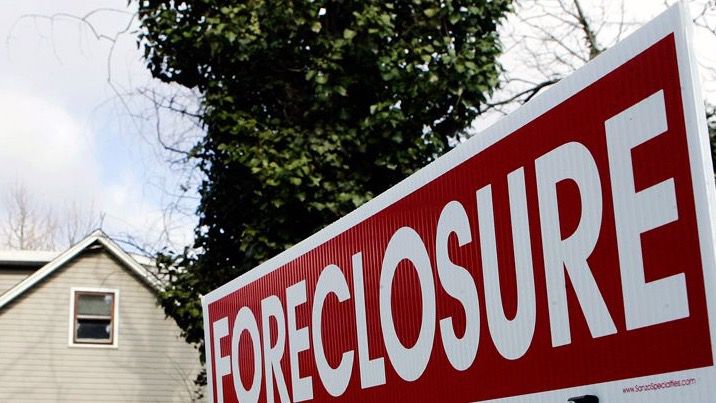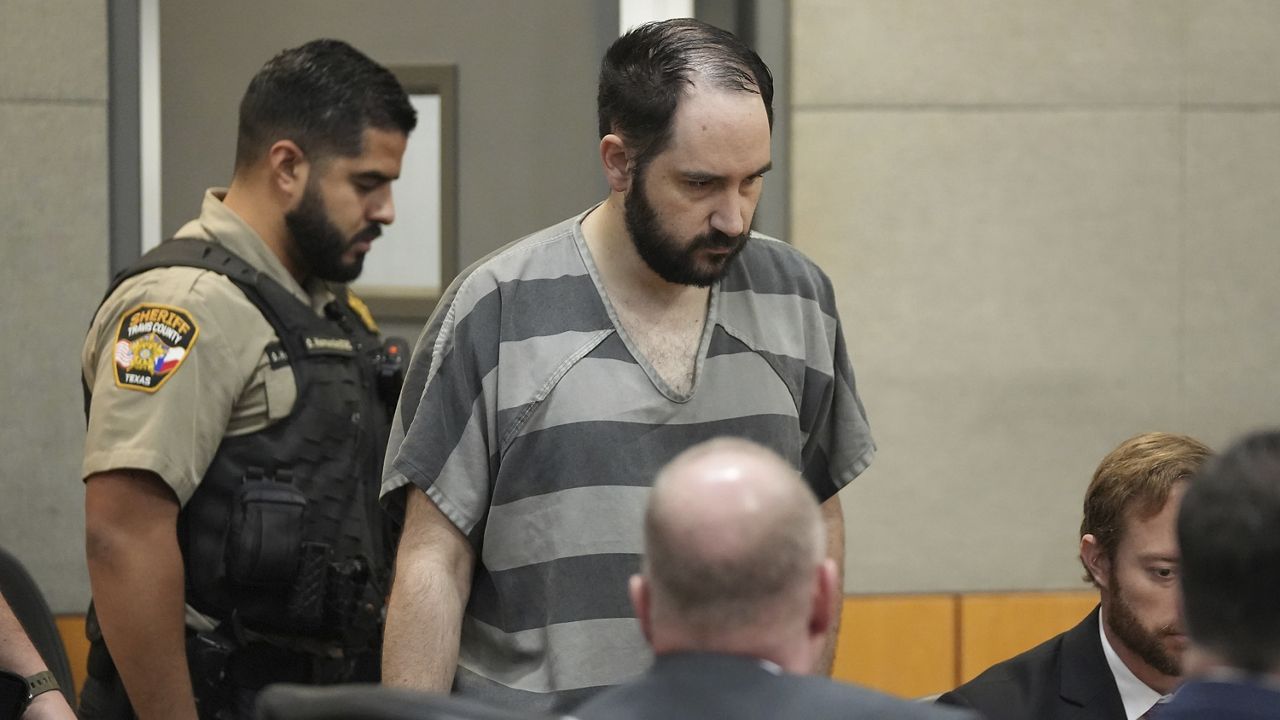Ohio
Home foreclosures on the rise in Ohio

CLEVELAND — Since dropping during the pandemic, the number of foreclosures across the country is on the rise again, and the region where they’re happening most often is right here in Ohio.
Throughout last year, about one out every 160 housing units in Cleveland were foreclosed on. A rate of 0.62%, which, according to the real estate data research firm ATTOM, is a higher rate than any other metro area in the entire country.
But it’s unclear why Cleveland tops the charts.
“We’ve really been looking for is what’s driving those sort of instances to occur in the economy overall. And what might be driving it slightly more in somewhere like the Cleveland Metropolitan area, or in Ohio in general than maybe in other states,” said Jonathan Ernest, an economics professor at Case Western Reserve University.
As Ernest alludes to, the problem extends beyond Cleveland. Ohio as a whole has fifth highest foreclosure rate among U.S. States, and when looking at individual zip codes, only three communities in the entire country had a higher rate than the Cleveland suburb of Shaker Heights, something that mortgage lender, Mario Ingraffia, said is likely because of high property taxes.
“I think it’s interesting in Cuyahoga County if you break down what are actually foreclosures associated to like delinquencies on their mortgage versus taxes,” Ingraffia said.
But while foreclosure rates have been on the rise since they essentially stopped during the pandemic, they’re still significantly lower than where they were in 2019.
Ernest believes lower interest rates could reduce the number of foreclosures, but also cause another problem.
“It also means that you might not be able to sell your house for quite as much, depending on the circumstances, which could affect whether or not you’re able to get out of a bad situation if you start to get underwater on your loan,” Ernest said.
Ingraffia said if you’re trying to avoid a home foreclosure, he suggests seeking help sooner rather than later.
“The best thing to do is reach out to your servicer upfront and they traditionally will point you to some housing counseling plus some options for you,” Ingraffia said.

Ohio
New law requires all Ohio school districts to create a cell phone policy

TOLEDO, Ohio (WTVG) – Cell phones. We see them everywhere we go, we all have them and it’s hard to go without them. But a new law will soon require Ohio school districts to create polices regarding cell phone use in school.
Governor Mike DeWine signed House Bill 250 into law Wednesday which requires every school district in Ohio to create a cell phone policy.
“They need a place, at least for several hours a day, to go and be students and have social interactions and have academic opportunities that are away from TikTok and Snapchat and all of these things that are distractive and addictive in their lives.” said Lt. Governor Jon Husted.
Locally, several school districts already have policies in place, most of them stating students aren’t allowed to have phones throughout the school day. At Anthony Wayne and Pike Delta York, their policy says phones are only allowed out during the school day when approved by a staff member. Other schools such as Perrysburg and Sylvania have similar policies which state phones can be used before and after school and at after-school activities as long as they don’t cause a distraction.
“It is a device that can be a positive at times to have during the day and students access it, but it also, we know, can be a very negative tool and a distracting tool,” said Tom Hosler, superintendent of Perrysburg Schools. “So trying to thread that needle of what is appropriate, what makes sense for the classroom, what makes sense for families, what makes sense to keep kids safe.”
But some other districts have a “no phones at all” policy.
“It’s just a distraction,” said Leigh Pancoast, principal at Swanton Middle School. “It’s just not needed in the school day. They have chrome books if they need anything to do any research, so we believe that it isn’t necessary for them to have them.”
Both districts 13 Action News spoke with say they will adjust their policies as needed to align with the new law. Schools will be required to adopt their cell phone policies no later than July 2025, ahead of the 2025-2026 school year.
Latest Local News | First Alert Weather | Crime | National | 13abc Originals
Copyright 2024 WTVG. All rights reserved.
Ohio
Ohio’s unemployment rate jumps to 4%

COLUMBUS, Ohio — Ohio’s unemployment is back at 4% after many months of being at historic lows.
The state’s unemployment rate was 4% in April, up from 3.8% in March. Ohio’s unemployment rate had been under 4% for 16 straight months and had even dipped as low as 3.3%, a record-low for the state, according to data released Friday by the Ohio Department of Job and Family Services.
Ohio
Ohio bill would require school districts to create released time for religious instruction • Ohio Capital Journal

Two Republican lawmakers are trying to strengthen an existing Ohio law by requiring — instead of just allowing — school districts to create a policy letting students to be excused from school to go to released time religious instruction.
State Reps. Al Cutrona, R-Canfield, and Gary Click, R-Vickery, recently introduced House Bill 445 and it has had one hearing so far in the House Primary and Secondary Education Committee.
“The correlation between religious instruction, schools, and good government are embedded in our constitution,” Click said in his written testimony. “You will notice that HB 445 does not establish which religion but merely acknowledges the opportunity for religious instruction. This opportunity is open to all faiths.”
May vs. shall
Ohio law currently permits school district boards of education to make a policy to let students go to a released time course in religious instruction.
HB 445 would require school districts to create a policy and changing the wording of the existing law in the Ohio Revised Code from “may” to “shall.”
“While many schools have taken advantage of the permissive language of the law, some school boards have been less accommodating,” Click said. “Regardless of their intentions, their failure to implement a sound policy in this matter results in a denial of both the students’ and parents’ constitutional right to the free exercise of religion.”
Cutrona agreed with his co-sponsor.
“Words have meanings and they really do matter,” he said. “So the difference between a little word like may versus shall can make all the difference in the world.”
Released time religious instruction must meet three criteria which would remain the same under the bill: the courses must take place off school property, be privately funded, and students must have parental permission.
The United States Supreme Court upheld released time laws during the 1952 Zorach v. Clauson case which allowed a school district to have students leave school for part of the day to receive religious instruction.
State Rep. Sarah Fowler Arthur, R-Ashtabula, questioned why this bill is needed if the law is already in place.
“My experience has been that if the federal law requires it, school districts are usually very hesitant to violate federal law or federal practice,” she said during a recent committee hearing. “I’ve just wondered why you want to see that change also in the state law if it’s already required in practice.”
Click said he knows nearly a dozen school districts that have denied religious instruction programs like LifeWise Academy, an Ohio-based religious instruction program that teaches the Bible.
“I believe that when we clarify this language, it will make a more broad statement that this is not only constitutional and legal, but it is something that needs to be done in the state of Ohio to accommodate parents and their children,” Click said.
LifeWise Academy
Click mentioned LifeWise Academy in his testimony.
“(LifeWise founder) Joel Penton began to organize and create an efficient model that provided training for instructors, character-based bible curriculum, and a platform that is reliable and reputable for participating schools,” Click said. “…While this opportunity is not limited to LifeWise, they have formulated the model program for release time for religious instruction.”
LifeWise was founded in 2018, launched in two Ohio school districts in 2019 and today enrolls nearly 30,000 students across more than 12 states. The program will be in more than 170 Ohio school districts by next school year — more than a quarter of the state’s school districts.
LifeWise, which is non-denominational, supports the bill.
“It gives parents the freedom to choose character-based religious instruction for their children during the school day, in accordance with Supreme Court rulings,” Penton, the founder of LifeWise, said in a statement.
However, there has been pushback to LifeWise.
Freedom From Religion Foundation Legal Fellow Sammi Lawrence wrote a letter to more than 600 Ohio school districts urging them not to allow LifeWise from taking place in their district.
“Per its own words, LifeWise’s goal is clear: they seek to indoctrinate and convert public school students to evangelical Christianity by convincing public school districts to partner with them in bringing LifeWise released time bible classes to public school communities,” Lawrence said.
Online petitions against LifeWise have also sprung up before the program comes to a school district.
Follow OCJ Reporter Megan Henry on X.
GET THE MORNING HEADLINES DELIVERED TO YOUR INBOX
-

 Politics1 week ago
Politics1 week agoRFK Jr said a worm ate part of his brain and died in his head
-

 World1 week ago
World1 week agoPentagon chief confirms US pause on weapons shipment to Israel
-

 News1 week ago
News1 week agoStudents and civil rights groups blast police response to campus protests
-

 World1 week ago
World1 week agoConvicted MEP's expense claims must be published: EU court
-

 Politics1 week ago
Politics1 week agoCalifornia Gov Gavin Newsom roasted over video promoting state's ‘record’ tourism: ‘Smoke and mirrors’
-

 Politics1 week ago
Politics1 week agoOhio AG defends letter warning 'woke' masked anti-Israel protesters they face prison time: 'We have a society'
-

 News1 week ago
News1 week agoNine Things We Learned From TikTok’s Lawsuit Against The US Government
-

 Politics1 week ago
Politics1 week agoBiden’s decision to pull Israel weapons shipment kept quiet until after Holocaust remembrance address: report



















